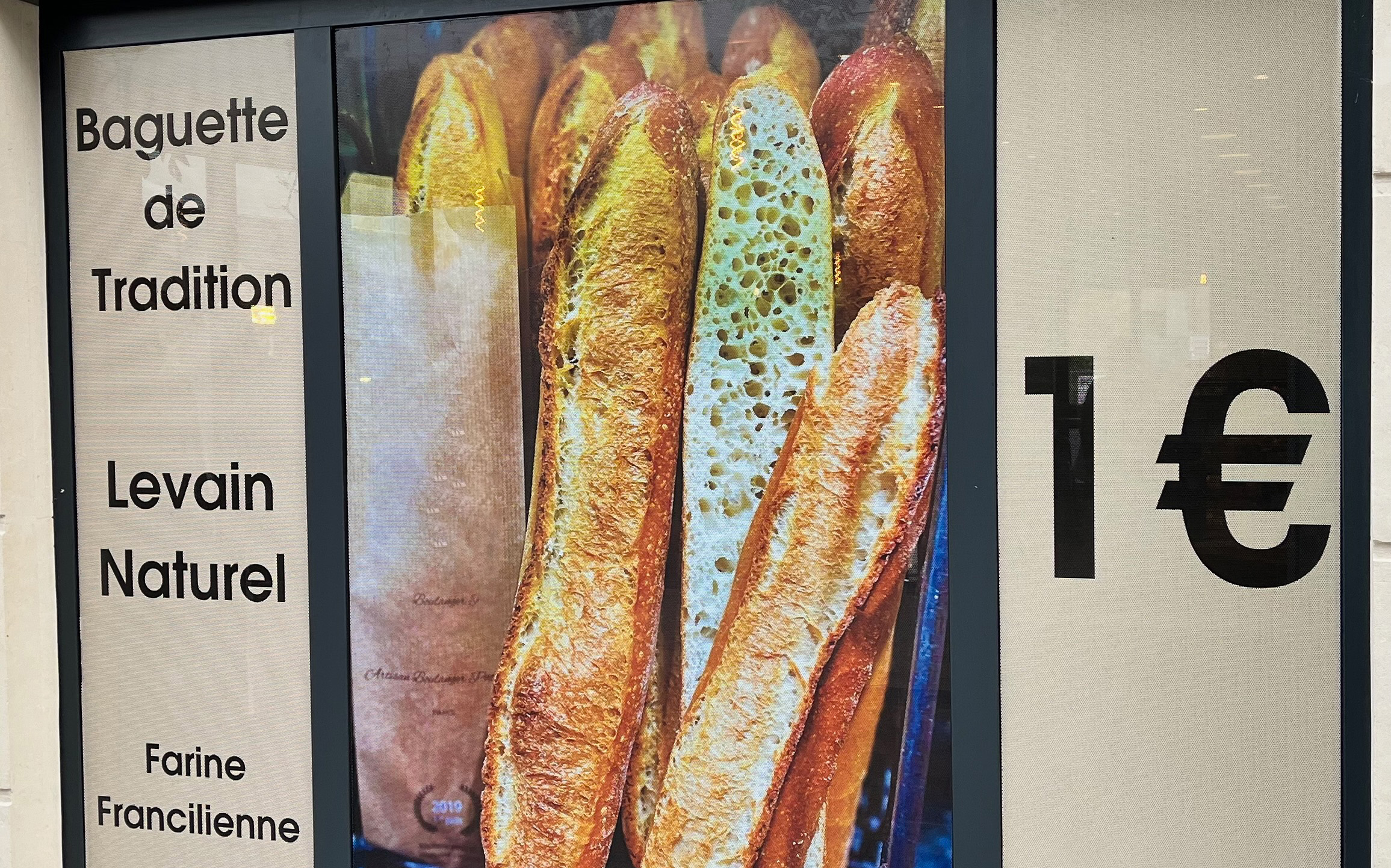Bread, pastries, and viennoiseries, luxuries no longer so affordable.
By Rémi Héluin
Energy crisis, soaring prices of wheat, then butter, sugar, and even cocoa — the bakery and pastry sector has not been spared by inflation. Most of its cost components have risen sharply, including labor, forcing artisans, franchises, and manufacturers alike to implement multiple price increases. The psychological threshold of the one-euro croissant or baguette has thus been widely surpassed, requiring significant efforts to educate consumers and normalize this new pricing reality. As a result, part of the customer base has dropped off, with many turning to lower-quality options as the only way to cope with rising prices..
23 cents in twenty years. Between 2002 and 2022, the price of a baguette rose only marginally, as shown by data from INSEE. A 250g loaf of “standard bread” then cost an average of 93 cents. Over the same period, wages increased far more significantly — as did overall food prices. Looking at the long term, the amount of work time required to afford this staple product has dropped considerably. In 1970, a baguette cost just 60 centimes in francs (about 10 euro cents), which equated to 10 minutes of labor based on the minimum wage at the time. Today, it’s half that: barely 5 minutes to buy a baguette. In response to this reality, the industry has undergone a price correction over the past three years, driven by the surge in energy prices and rising wheat costs. As a result, the baguette has crossed the symbolic 1-euro threshold, with an average price of €1.02 in 2024.
The baguette: an iconic and fiercely contested product

© DR
The fiercely contested nature of this iconic product of French bakeries has led several players to position themselves with permanent, tempting promotions — such as the well-known “3+1” offer (buy 3, get 1 free). Due to the deeply rooted place of bread in French eating habits, price increases have been more moderate in France than elsewhere in Europe: while bread prices rose by an average of 18% across the Eurozone between 2021 and 2022, the increase was only 8% in France. However, the emergence of so-called “special” breads — increasingly elaborate and premium — is beginning to challenge the principle of accessibility long upheld by French artisans. Organic flours, seeds, heritage wheat varieties, long fermentation processes, and the use of natural sourdough are all features that help justify retail prices frequently exceeding €10 per kilo.
A salty bill on the sweet side
The most dramatic price increases in bakeries are not to be found in bread. More complex products, requiring costly raw ingredients, have been more heavily impacted by inflation — particularly viennoiseries and pastries. By the end of 2024, a ton of industrial butter was trading at €8,180, nearly double the price observed a year earlier (€4,260 in September 2023). For some professionals, depending on the type of butter used, costs have nearly tripled. Farewell to croissants priced around one euro — they now average €1.30, and sometimes exceed €1.50 in urban areas. While many bakers have had to reduce their margins on this product, they have introduced higher-priced offerings to protect their overall profitability. Sweet treats like pastries haven’t been spared either. The €3.80 that consumers paid on average for an individual pastry in 2023 (source: OpinionWay) already feels like a thing of the past. The price hikes aren't limited to upscale creations flaunted on social media — they also affect everyday products. Pastry recipes containing chocolate are among the hardest hit, as cocoa experienced an unprecedented crisis in 2024 due to poor harvests in key producing regions. The premiumization of sweet offerings is contributing to an overall inflationary trend in this category: hyperrealistic cakes, refined entremets, and increasingly sophisticated bakery pastries like custard tarts. It’s now common to find pastries priced at €7 each, even in suburban or rural bakeries. According to a recent study by Dawn Foods, 72% of consumers still see pastries as an affordable luxury. But for how much longer? The threat of trading down is looming for the artisanal sector, with consumption potentially shifting toward industrial offerings — whose prices remain low thanks to automated production and bulk purchasing.
At lunchtime, bakery offerings are losing their appeal
This trend is also evident in the snacking segment. For a long time, bakeries were seen as a particularly affordable lunchtime option, with the iconic ham-and-butter sandwich once priced around €3.50 at independent shops. In 2023, the average spend for a bakery lunch break reached €9.20, gradually approaching the levels seen in the broader fast-food sector. In 2021 alone, 2.6 billion sandwiches were sold across France. Since then, artisans have had to improve their cost control in response to fluctuations in raw material prices. As the range of savory offerings grows, managing the diversity of ingredients has become increasingly complex. Competition from large retailers and snack brands offering €5 menu deals or similar low-cost options is threatening the bakery sector’s momentum. The strategic choices made by players like Marie Blachère (with its “P’tit malin” 4-item menu), La Mie Câline (with its “Cook’mie malin” deal), or Ange (with similar entry-level offerings) are no coincidence: the price war continues to shape bakery storefronts, all in an effort to ensure that artisanal expertise remains an accessible luxury.
Cover photo by Rachel Claire